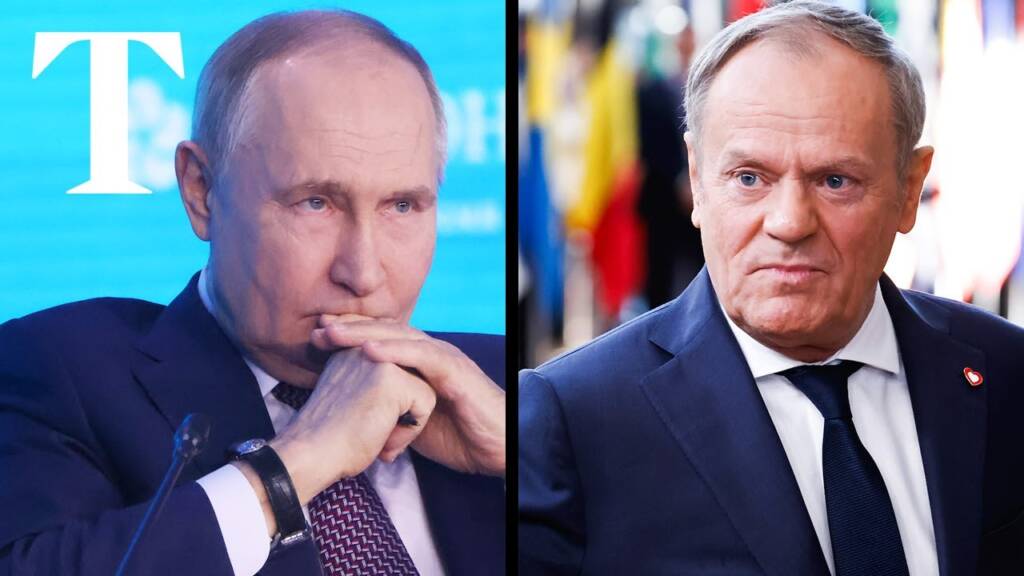In the early hours of September 10, 2025—Poland experienced a massive shock, its first direct military engagement in the Russia-Ukraine war. Russian drones breached Polish airspace amid a massive Russian airstrike on Ukraine. More than ten drone-like objects entered across the Podlaskie, Mazowieckie, and Lublin regions. Polish and NATO air defenses were scrambled. Some drones were shot down, and debris searches are underway. Flights at Chopin Airport and other regional airports were temporarily suspended as a precaution. The moves have shocked the local populace.
Poland’s military command confirmed that drones repeatedly violated Polish airspace during the Russian attack across the border, in western Ukraine.
Radars tracked more than 10 objects and those that could pose a threat were “neutralised,” the command said.
“Some of the drones that entered our airspace were shot down. Searches and efforts to locate the potential crash sites of these objects are ongoing,” it said in a statement.
Polish Prime Minister Donald Tusk in a command center, flanked by military officers remarked gravely, “This is an act of aggression,” he warned, calling for emergency cabinet and NATO consultations. U.S. and NATO officials echoed the alarm, with some U.S. lawmakers calling it “an act of war” and calling for steeper sanctions on Moscow.
This incursion has occurred at a delicate moment: Russia and Belarus are holding their massive Zapad‑2025 military drills near Poland’s border, including simulated nuclear scenarios with hypersonic missiles. In response, Poland announced it would close its border with Belarus at midnight, citing security concerns.
However the incursion is not out of nowhere. Over the past two years, Poland has quietly become NATO’s most important logistical artery for Ukraine. Trains, trucks, and convoys carrying Western weaponry—HIMARS, Leopard tanks, drones, munitions—flow from Germany and the U.S. through Polish territory before reaching Ukrainian battlefields.
This lifeline has transformed Poland into a frontline actor in the war, despite not firing a single shot—until now.
Poland’s Anti Russia Stance
The relations between Russia and Poland have been tense for quite a few years. Tempers have frayed considerably since the Russia Ukraine war began.
Poland has steadily been building up its military abilities. The “Tusk Line”—a comprehensive defensive system including minefields, anti‑tank ditches, and reinforced fortifications running the full length of Poland’s border with Belarus and Kaliningrad. The aim: to block or slow any future Russian advance from the east.
Alongside this, Warsaw has accelerated defense spending and accepted its role as a crucial transit point for arms, aid, and supplies destined for Ukraine. This has drawn Russia’s sharp disapproval—Moscow has accused Poland of making itself a launchpad for NATO-backed operations
To support this role, Warsaw has committed more to defense than almost any other NATO member. It now spends over 4% of its GDP on defense—twice the NATO minimum, outpacing even the U.S.
It has signed massive arms deals with nations from all over the world. It is quite clear Poland is not just defending itself—it is preparing for the possibility of a Russian confrontation.
Amid these maneuvers, President Vladimir Putin has issued pointed warnings to Poland: any aggression against Belarus—a close ally in the Union State—will be treated as aggression against Russia itself. It’s a reminder that the Kremlin regards Poland’s security posture as provocatively linked to its own red lines.
This drone strike seems less a mistake and more a calculated test of NATO resolve. By piercing Polish airspace with tactical drones, Russia may be probing the alliance’s deterrence threshold—seeking to gauge how firmly Warsaw and its allies will defend against limited yet provocative incursions
So far Russia has chosen not to officially comment on the drone attack on Poland. According to analysts this drone strike seems less a mistake and more a calculated test of NATO resolve. By piercing Polish airspace with tactical drones, Russia may be probing the alliance’s deterrence threshold—seeking to gauge how firmly Warsaw and its allies will defend against limited yet provocative incursions
This escalation is more than a flashpoint—it’s a juncture for European security, a test of how a future clash may play out. It is also a test for NATO, Will Poland’s allies trigger Article 5 if Warsaw is targeted again?
Last night, Russia knocked on Poland’s door—not with overt invasion, but with a calculated incursion. The question is what happens when NATO responds. Regardless Putin has made it clear, in Russia’s sphere of influence, he will not tolerate even a hint of foreign interference.
